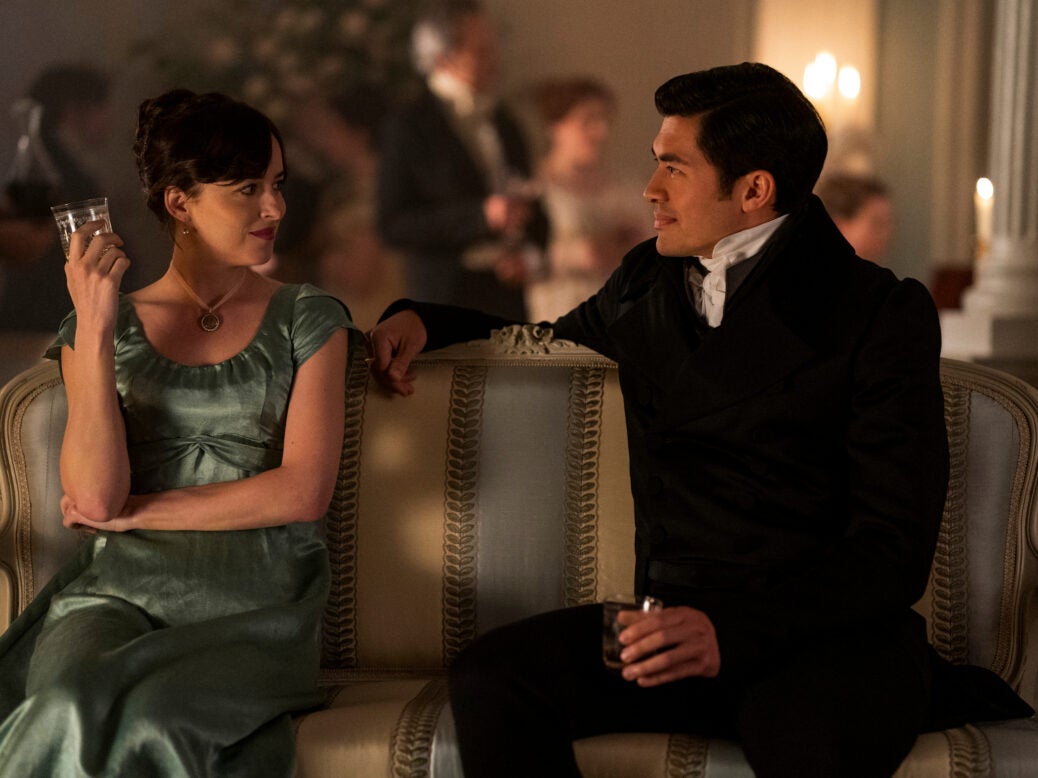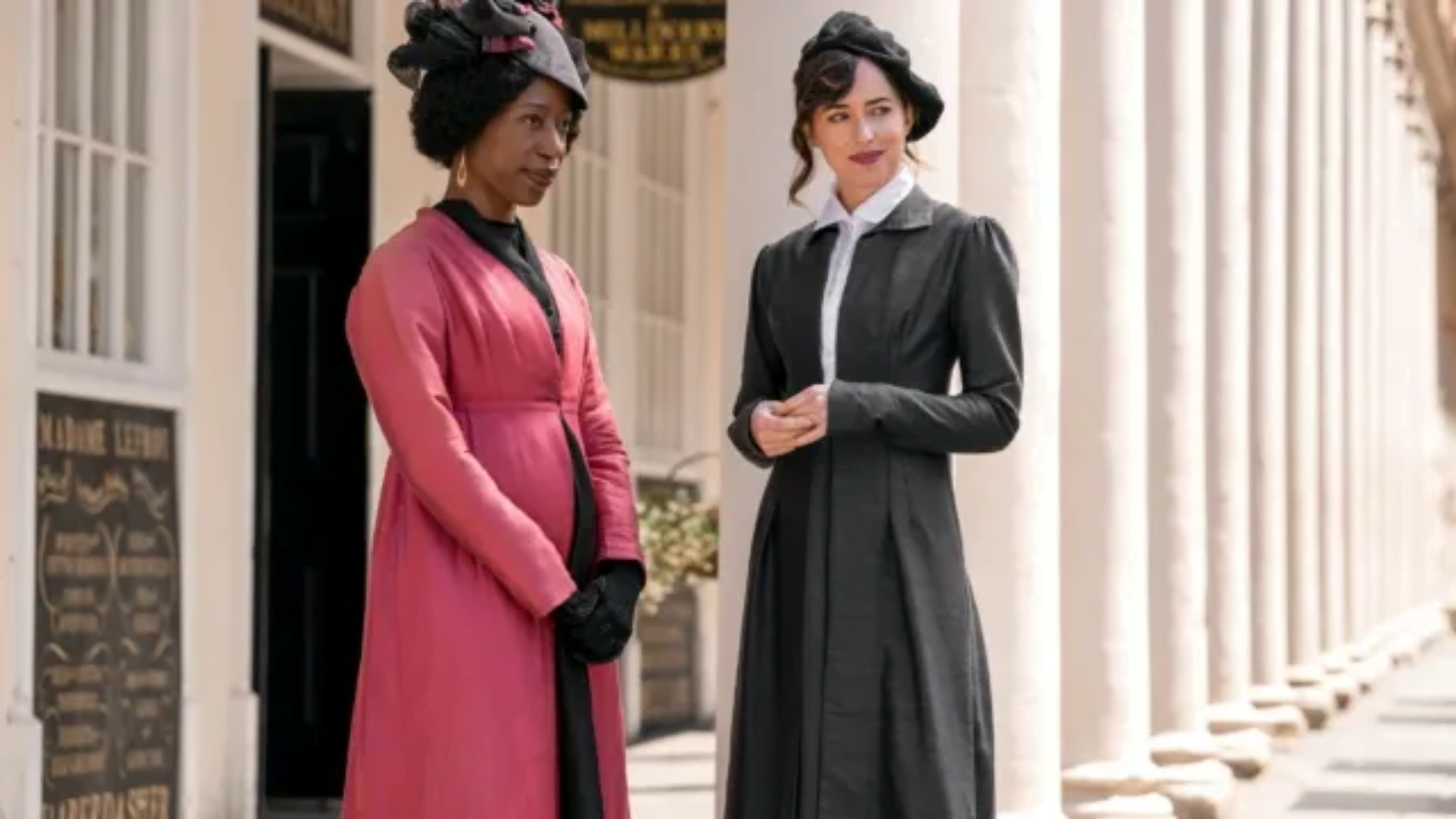It’s 2022, and the modernisation project of the regency era is well underway. Each year, a new season of Bridgerton descends upon us and gives the internet a new ‘diamond of the season’ to rave over. If 2021 was Regé-Jean Page’s year, 2022 would be Simone Ashley’s. Not only are the two protagonists in the Gossip Girl-Esque period drama, but both stand out as actors of colour in a conventionally white story.
A more recent case of colour-blind casting in regency-era dramas has been in the case of the Netflix adaptation of Jane Austen’s Persuasion. With Malaysian-British actor Henry Golding, Nigerian-British actress Nikki Amuka-Bird, and many more, Persuasion joins the race-blind casting club.
Within the casting itself, critics point out that race-blindness has compromised historical accuracy. As in the case of most race-blind period dramas, this argument has also been extended to instances such as the questions of accuracy regarding Halle Bailey’s casting in The Little Mermaid (2023).
However, such casting in historical dramas is not a new phenomenon. Be it Dev Patel playing David Copperfield (2019) and Adeel Akhtar playing Lestrade in Enola Holmes (2020), colour-bind casting has been a feature in showbiz for quite some time. In fact, lest we forget, even Amitabh Bachchan played Meyer Wolfsheim in The Great Gatsby (2013), a character is originally written to be an Ashkenazi Jew.
Disney-fantasy films such as the upcoming Little Mermaid (2023) and superhero movies like Thor: Ragnarok (2017) have also embraced a colour-blind cast. So if the colour-blind casting is so rapidly expanding to all forms of film and television, what is with the whole debate over it?
It all began with the opera Tannhäuser (1961), which featured mezzo-soprano Grace Bumbry as Venus. Bumbry led on to become the first black singer to ever perform at the Bayreuth Festival in Germany. However, her casting was not just a move to make the opera seem more inclusive, but in fact, there lay a much deeper vision on the part of the director Wieland Wagner. Hiring a black singer for a white role was part of a larger picture to sever post-War Bayreuth’s ties from its turbulent and racist past.
Opponents of heterogeneous casting in implausible roles and plotlines have also alleged that racial inclusion has been reduced to a “tick-box exercise”. Race-blindness solely for the purpose of scoring DEI (Diversity, Equity, and Inclusion) points is increasingly common and a lot less desirable.
The opera soon became a huge scandal, and Bumbry’s casting swelled up to a high level of national significance. Contrast this with the deluge of critical views that Persuasion finds itself in. Leaving the casting aside — the screenplay itself is facing a lot of flak- especially from Austen’s deepest admirers, who regard the movie to be a greatly watered-down and Fleabag-ified version of the novel.

Within the casting itself, critics point out that race blindness has compromised historical accuracy. As in the case of most race-blind period dramas, this argument has also been extended to instances such as the questions of accuracy regarding Halle Bailey’s casting in The Little Mermaid (2023).
Opponents of heterogeneous casting in implausible roles and plotlines have also alleged that racial inclusion has been reduced to a “tick-box exercise”. Race-blindness solely for the purpose of scoring DEI (Diversity, Equity, and Inclusion) points is increasingly common and a lot less desirable.
As in the case of the 2020 Hulu adaptation of Sally Rooney’s novel Normal People, thoughtless race-blind casting led to the three major anti-heroes being people of colour — for no specific reason. ‘Colour-conscious’ casting in modern fiction would rather focus on racial diversity by answering why a specific character needs to belong to a specific race.
As in the case of the 2020 Hulu adaptation of Sally Rooney’s novel Normal People, thoughtless race-blind casting led to the three major anti-heroes being people of colour — for no specific reason. ‘Colour-conscious’ casting in modern fiction would rather focus on racial diversity by answering why a specific character needs to belong to a specific race.
This, in turn, would require self-interrogation and accountability, which could be the factors that filmmakers try to avoid by random race-blind casting.
The damages that can be done by race-blind casting are deeper. At best, it is implausible and almost hilarious to see a host of actors from various racial backgrounds play characters from the Mahabharata in the 1989 film adaptation, written by English and French screenwriters. At worst, it ignores the history of discrimination in the entertainment industry and dismisses any accountability about the intention of why an actor of a specific race was cast for a specific role.
/cdn.vox-cdn.com/uploads/chorus_image/image/71121668/PERSUASION_Unit_00796RC.0.jpg)
A 2018 article in the Harvard Journal of Sports and Entertainment Law addresses another facet of race-blind casting in Hollywood. Race-blind casting does not appropriately deal with the discriminatory environment that exists even in the present-day labour market. Ignoring race, as done in Persuasion and Bridgerton, feeds into the harmful notion that not talking about race and the contexts it adds would fix America’s deeply entrenched racist rhetoric.
Movies and TV have great potential to contribute to meaningful societal changes, learning about the world, understanding diverse contexts, and connecting with various cultures.
However, a very elementary and widely-observed purpose of cinema is entertainment and even escapism. For instance, most mainstream Hindi cinema is aimed at being an escapist experience for the masses, providing a brief distraction from the trials and tribulations that the lower and middle classes face.
Along these lines, proponents of race-blind casting argue that people of colour, too, deserve escapist, fantastical, and implausible storylines in mainstream cinema. Addressing historical oppression and marginalisation in each story with a character of colour would not only take the focus away from the primary plotline but also restrict people of colour to only see themselves represented through reminders of a painful past and present.
Also read: Women, Race & Class: Angela Davis And The Women’s Movement In India
What acts as a middle ground on both sides of this debate is the need to replace colour-blind casting with colour-conscious casting. While the former succeeded in bringing in a larger number of actors of colour to our screens, the latter acknowledges and embraces the various layers and dimensions that racial contexts bring to a story.
In order to meaningfully and accurately include characters of colour in historical dramas, it is essential, to begin with choosing a racially diverse historical setting in the first place. Such a plotline can act as the perfect vehicle to not only address issues of racial representation in traditionally white-dominant storylines, but it would also provide depth to the story by appropriately weaving in conversations on race within backgrounds they have been missing in all this time.
“Not seeing colour” and being “colour-blind” has always been ineffective and even harmful response to tackling deeply-rooted racism. Duplicating the same within film and TV would not have any different effects either. Here’s hoping that whichever upcoming period drama is going to be the next talk-of-the-town, it does away with the pattern of feeding viewers false and one-dimensional histories under the garb of representation.
Also read: A Racist India & How Its Racism Is Different For North-Eastern Women
Featured image source: British GQ
About the author(s)
Kavya is a student from Gurgaon, trying to study Economics and Sociology, but ends up spending all her time re-watching The Office. She is tiny and rolls her big eyes on those who say "i SuPpOrT wOmEn'S rIgHtS bUt NoT fEmInIsM".




